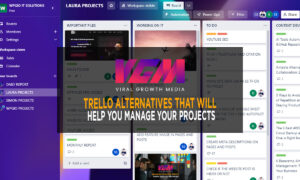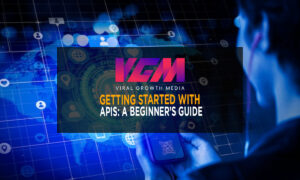Email marketing is a powerful tool for businesses of all sizes. When done correctly, email marketing can help you boost your engagement and drive more sales. In this blog post, we will discuss 7 best practices for B2B email marketing. We will also provide real-life examples to help you better understand how these strategies work. Let’s get started!
Best Practice 1: Use a Strong Subject Line
Your subject line is the first thing your recipients will see when they receive your email. This makes it one of the most important elements of your email marketing campaign. A strong subject line can make the difference between an email that gets opened and an email that gets deleted.
When crafting your subject lines, always keep your audience in mind. Write headlines that are clear, concise, and interesting. Most importantly, make sure your subject lines are relevant to the content of your email. Irrelevant or misleading subject lines are a surefire way to get your emails ignored.

Best Practice 2: Keep Your Emails Short and Sweet
In today’s fast-paced world, people don’t have time to read lengthy emails. That’s why it’s important to keep your emails short and sweet. Get to the point quickly and be concise in your writing. If you have a lot of content that you want to include in your email, consider breaking it up into multiple emails. This will make it easier for your recipients to digest your content and take action on it.
Best Practice 3: Use Rich Media
Rich media is a great way to add visual interest to your emails and make them more engaging. You can use rich media such as images, videos, infographics, and GIFs to enhance your message and capture your audience’s attention. Just be sure not to overdo it! Too much rich media can make your email look cluttered and overwhelming.
Best Practice 4: Personalise Your Emails
Personalised emails have been shown to perform better than generic emails. When you personalise your emails, you make a connection with your recipients and show them that you value their business. There are a few different ways you can personalise your emails, such as using the recipient’s name in the subject line or body of the email, or segmenting your list so that you only send relevant content to each individual.
Best Practice 5: Use an Engaging CTA
Your call-to-action (CTA) is one of the most important elements of your email marketing campaign. Your CTA should be clear, concise, and easy to understand. It should also be relevant to the content of your email and compel your recipients to take action. Some examples of effective CTAs include “Sign Up Now,” “Download Our Whitepaper,” or “Get 20% Off Your Next Purchase.”
Best Practice 6: Timing is Everything
When it comes to email marketing, timing is everything. You need to find the right balance between sending too many emails and not enough emails. If you send too many emails, you run the risk of annoying your recipients and causing them to unsubscribe from your list. On the other hand, if you don’t send enough emails, you miss out on opportunities to engage with your audience and boost your sales.
The best way to find the right email frequency for your business is to experiment and track your results. Start by sending emails more frequently and then back off if you see a decrease in engagement. Conversely, you can start by sending emails less frequently and then increase your frequency if you see an increase in engagement.

Best Practice 7: Always Test Your Emails
Before you send your email marketing campaign to your entire list, it’s important to test it first. This will help ensure that your email looks great on all devices and that all of the links are working properly. To test your email, simply send a test message to yourself or a small group of people who can provide feedback. Then, make any necessary changes before sending it to your entire list.
Following these best practices, you can be sure that your email marketing campaigns are more effective and engaging. By taking the time to craft well-written and visually appealing emails, you’ll be able to boost your open rates and click-through rates, and ultimately generate more sales. So what are you waiting for? Start implementing these best practices today!
By following these 7 BED email marketing best practices, you can be sure to create more effective and engaging email campaigns that will help boost your sales. These best practices include keeping your emails short and sweet, using rich media, personalising your emails, using an engaging CTA, timing your emails correctly, and always testing your emails before sending. Implement these tips today to see a difference in your engagement levels!
Email Marketing
The use of email in your marketing efforts to advertise a company’s items and services while also incentivizing client loyalty. Email marketing is a form of marketing that can notify consumers on your email list about new goods, price reductions, and other services. It could be an indirect hard sell to educate your audience about the value of your brand or keep them interested between purchases. It might range from anything to something else entirely. Mailchimp can assist you with designing, developing, and optimising your email marketing strategy for the greatest return on investment in your campaign.
What is email marketing?
Email marketing is a powerful marketing tool that uses email to promote your company’s products or services. It may help make your consumers aware of your newest goods or deals by integrating it into your digital marketing strategy. It can also play an important part in your marketing plan, particularly lead generation, brand awareness, developing relationships, and retaining customers engaged between purchases through various sorts of email campaigns.
A brief history of email
The very first email was sent by computer engineer Ray Tomlinson in 1971. The message he delivered was nothing more than a string of numbers and letters, but it began a new era in communication. Tomlinson is also responsible for the use of the “@” symbol in email addresses.
The first commercial email was sent out in 1978 by a marketing manager at Digital Equipment Corp. named Gary Thuerk, who utilised this new approach of immediate communication to inform consumers about a new product. His limited email list generated $13 million in sales after only 400 contacts.

7 B2B Email Marketing Best Practices You Should Follow
1. Use a Subject Line Between 28 and 50 Characters
Having a catchy, appealing subject line is critical to getting emails opened; therefore this is the first thing you need to master. The length of your subject line is one of the most important aspects of writing a successful subject line.
Although there has been a variety of research done on the topic, recent data from Campaign Monitor found that somewhere between 28 and 50 characters is optimal. More smartphone users are reading emails than ever before, so it’s important to consider those with limited screen real estate when crafting your subject line. shorter subject lines of28 to 39 characters seem to perform best for mobile users.
2. Personalise the Heck Out of Your B2B Emails
“Personalization will be the most popular approach for 47 percent of B2B marketers ,” claims 99 Firms. Email is not an exception.
Using personalization in B2B emails is a no-brainer, with click-through rates increasing by 14% on average and conversions by 10%. This is perhaps the most essential of all of the best practices.
Always keep in mind that you should personalise, personalise, personalise every email to suit the individual reader. How can you do this for your B2B emails specifically? The Expert Institute provides legal services and took a one-to-one approach which you could definitely emulate.
3. Use Between 50 and 125 Words of Text
The length of your text is one of the principal elements in determining email CTR. You need to find a balance between providing enough detail about your offer, the benefits, and why readers should be interested. But if you go too far and write excessively, people will start unsubscribing from your emails.
According to recent statistics, “the ideal email copy length is between 50 and 125 words,” according to Campaign Monitor, and “typically results in response rates over 50 percent.” To put it another way, you want to be succinct yet not too brief. This approach has been proved to improve engagement and CTR.
This B2B email is a great example of using just the right amount of copywriting to create paragraphs that are easy to read and digest. With only 102 words, it provides readers with exactly what they need without adding any extra or unnecessary information. You can use this same approach in your own campaign by breaking up your text into manageable chunks.
4. Keep a Conversational Tone
A frequent error I notice a lot of B2B companies make is to communicate with leads in an uninteresting, rigid, hyper-formalistic tone. And I get it. They want to appear intelligent and competent, so they inform prospects they’re professionals. Being seen in this manner appears obvious, but you don’t have to be dull to accomplish it. In fact, the greatest emails I receive come from firms that don’t take themselves too seriously. As a result, use a conversational style and engage readers in a discussion rather than being stuffy and formal.
5. Use 1 to 3 Images
Let’s talk about imagery. I believe we can all agree that images are useful in B2B emails. After all, “32 percent of marketers claim visual images are the most essential type of content for their business.” But just how many pictures should you use? According to a research carried out by Constant Contact a few years ago, CTRs were highest for brands who used 1 to 3 photos.
6. Make Sure Each B2B Email Answers 3 Key Questions
The final stage of the B2B email campaign is to answer three key questions so that your email can reach its target.
They are:
- What are you offering?
- How will it help the reader?
- What should they do next?
Your email should answer these three questions to be effective. Let’s use Flywheel, a managed WordPress site for designers and creative agencies, as an example. Their email has a header reading “Sale” and a sub header that says clearly: “This month only, get three months ofFlywheel free with any new annual plan.” In this way, they make it immediately obvious what they are offering.

7. Send Between 1 and 5 Emails Per Month
There are a few different schools of thought when it comes to email frequency, but I think the most important thing is to find a balance that works for you and your audience. You want to make sure you’re sending enough emails to stay on your subscribers’ radar, keep them engaged, and ideally convert them into customers. Experiment with different frequencies and cadences until you find something that works best for both you and your list.
However, you don’t want to be a nuisance with too many emails, so it’s all about finding the correct balance. nask 10 email marketers what the best frequency is and you’ll get 10 distinct answers.
According to Co Schedule’s in-depth research, however, a specific range that tends to work well across the board for B2B firms is “at least one email per month, and no more than five.”
Conclusion:
Email marketing can be a powerful tool for businesses of all sizes. When done correctly, email marketing can help you boost your engagement and drive more sales. In this blog post, we have discussed 7 best practices for B2B email marketing. We have also provided real-life examples to help you better understand how these strategies work. Let’s get started! What are your thoughts on implementing some of these tactics into your own email marketing strategy?























